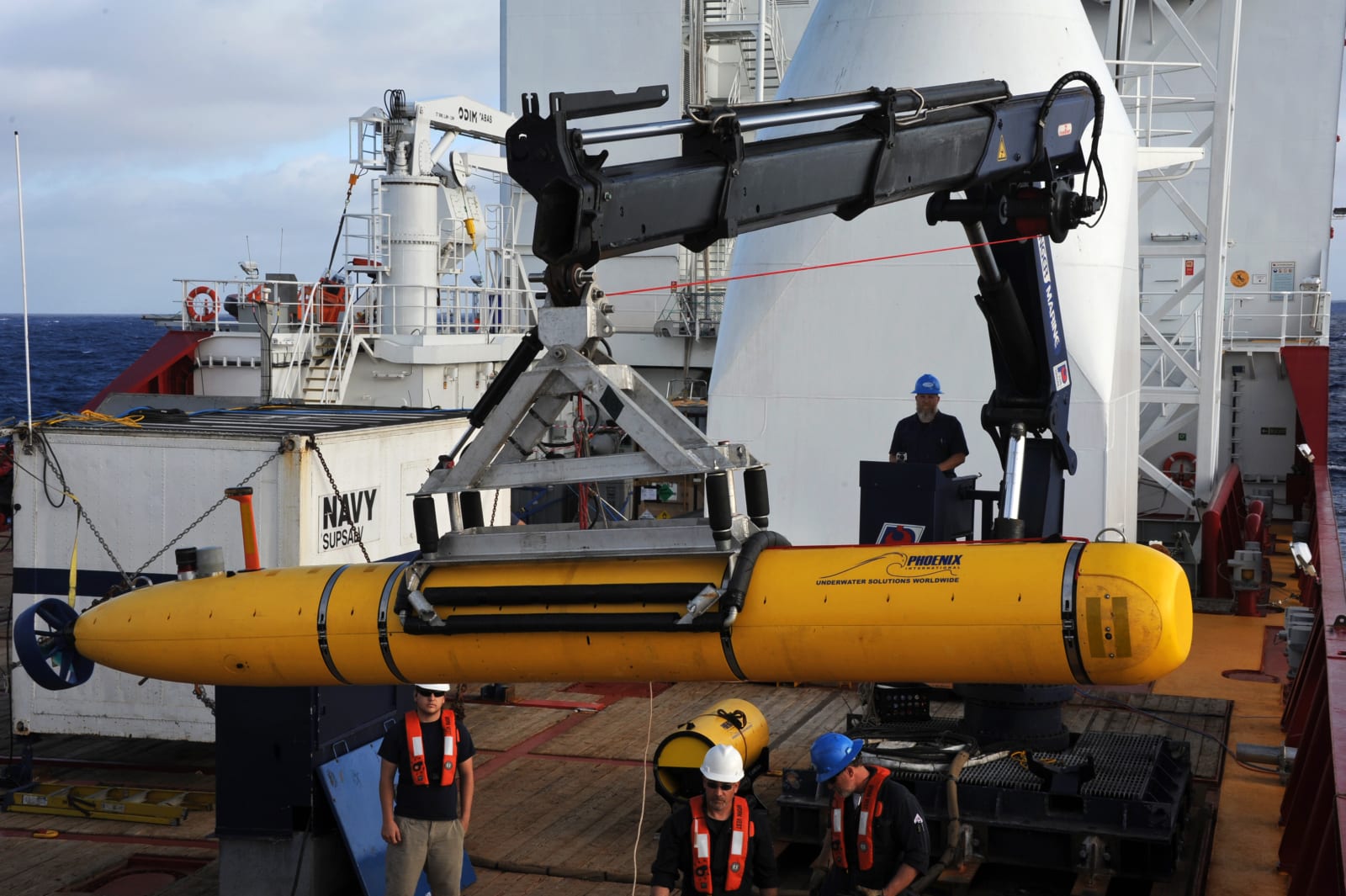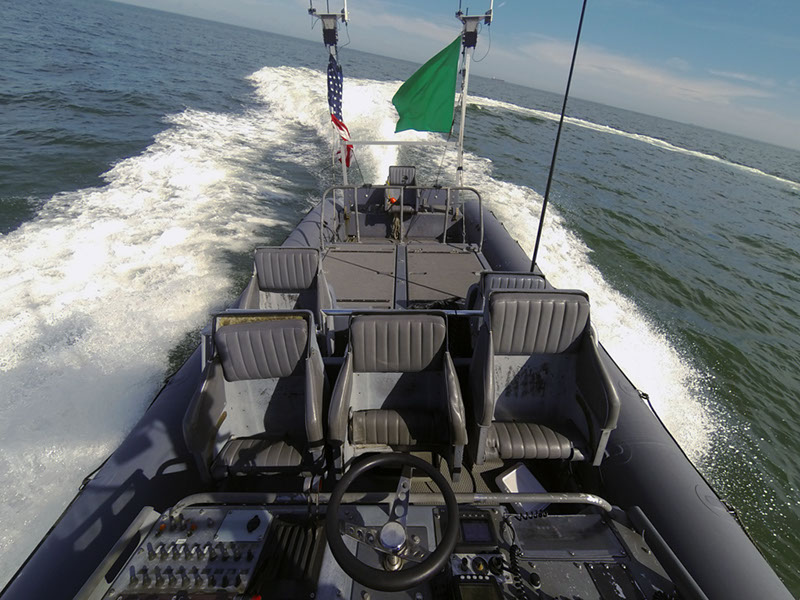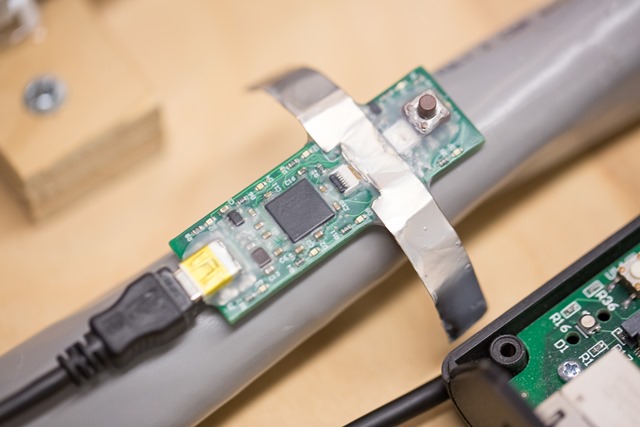
As if there weren't enough real jellyfish around to trigger our thalassophobia, researchers at Virginia Tech have created Cryo -- an eight-armed autonomous robot that mimics jelly movement with the help of a flexible silicone hat. The man-sized jellybot altogether dwarfs previous efforts, hence the upgrade from small tank to swimming pool for mock field tests. And unlike the passively propelled bots we've seen recently, Cryo runs on batteries, with the researchers hoping to better replicate the energy-efficient nature of jelly movement to eventually increase Cryo's charge cycle to months instead of hours. That's also the reason these robotic jellyfish are getting bigger -- because the larger they are, the further they can go. Potential uses include ocean monitoring and perhaps clearing oil spills, but the US Navy, which is funding the work, sees an opportunity to recruit jellies for underwater surveillance -- a job the researchers say is suited to their natural-looking disguise. But, before the tables are turned, you can spy on Cryo for yourself in the video below.
Filed under: Robots, Alt
Comments
Via: Wired
Source: Virginia Tech (Vimeo)
 Trade secret theft allegations are serious enough in the corporate world, but they're particularly grave when they involve military projects. And one contractor is learning that the hard way. A Connecticut federal court has found electrical enginee...
Trade secret theft allegations are serious enough in the corporate world, but they're particularly grave when they involve military projects. And one contractor is learning that the hard way. A Connecticut federal court has found electrical enginee...
 Trade secret theft allegations are serious enough in the corporate world, but they're particularly grave when they involve military projects. And one contractor is learning that the hard way. A Connecticut federal court has found electrical enginee...
Trade secret theft allegations are serious enough in the corporate world, but they're particularly grave when they involve military projects. And one contractor is learning that the hard way. A Connecticut federal court has found electrical enginee...
 Autonomous vehicles really don't know how to switch lanes as well as people do. They tend to rely on either relatively static data models that are difficult to study in the thick of traffic, or are basic enough that the car might only change lanes wh...
Autonomous vehicles really don't know how to switch lanes as well as people do. They tend to rely on either relatively static data models that are difficult to study in the thick of traffic, or are basic enough that the car might only change lanes wh...
 Computers are getting better at spotting objects, but they tend to work in isolation. What good would a security robot be if it couldn't share info about an intruder with other machines? Cornell scientists might have an answer. They're designing a...
Computers are getting better at spotting objects, but they tend to work in isolation. What good would a security robot be if it couldn't share info about an intruder with other machines? Cornell scientists might have an answer. They're designing a...
 Explosions are insidious. Even if a blast doesn't deliver a conspicuous injury, it can inflict brain trauma that might not be evident until much later. The US Navy's Office of Naval Research doesn't want medics to wait, though. It's developing Blast...
Explosions are insidious. Even if a blast doesn't deliver a conspicuous injury, it can inflict brain trauma that might not be evident until much later. The US Navy's Office of Naval Research doesn't want medics to wait, though. It's developing Blast...
 While the US Navy's new state-of-the-art USS Zumwalt destroyer struggles to remain functional, the service branch's R&D department has been busy investigating cutting-edge tech at a much smaller scale. Back in October, the Office of Naval Researc...
While the US Navy's new state-of-the-art USS Zumwalt destroyer struggles to remain functional, the service branch's R&D department has been busy investigating cutting-edge tech at a much smaller scale. Back in October, the Office of Naval Researc...
 You get a bill from your electricity provider every month laying out how much energy you used, but there's no easy way to get a breakdown of which appliances suck down the most juice. But the US Navy has partnered with MIT scientists to design a chea...
You get a bill from your electricity provider every month laying out how much energy you used, but there's no easy way to get a breakdown of which appliances suck down the most juice. But the US Navy has partnered with MIT scientists to design a chea...
 You normally need non-renewable elements or minerals to create nanowires. However, the US Navy's Office of Naval Research may have a better solution: the life living in the dirt under your feet. Its sponsored researchers have crafted nanowires from...
You normally need non-renewable elements or minerals to create nanowires. However, the US Navy's Office of Naval Research may have a better solution: the life living in the dirt under your feet. Its sponsored researchers have crafted nanowires from...


